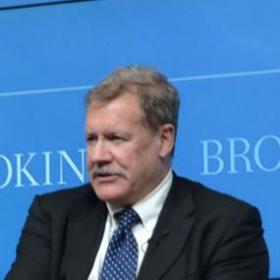
Global Treaty on Energy Efficiency? The NPT Model
Greg Austin wrote this piece for his weekly column in New Europe.
Rules for effective advertizing in the commercial world include elements like “keep it simple”, “find an appeal in the market” and “work off a strategy”. Another good guideline is “think in words and pictures”. Now shift to the climate change debate and think of how to package the idea of “parts per million of carbon dioxide” – a nightmare brief for any advertizing agency. So why then do the world’s political leaders keep trying so stubbornly to sell the message of mitigating climate change by reference to reducing carbon dioxide emissions.
As serious as the issue of “ppm” is, few people involved in public policy or business actually identify with the term. How many people wake up in the morning and say: “I need to reduce my ppm today?” There has been an advance in marketing climate change mitigation in recent years with the advent of the idea of “reducing the carbon footprint”, and many more people identify with their carbon footprint than with their ppm. But on closer inspection, the footprint term is not consumer friendly either. The economics of costing a carbon footprint is almost as inaccessible and contested as the science of climate change.
By contrast, the term “energy saving” is one that is universally understood, from the poorest communities to the richest, from the least educated to the most educated. In the rich world, there is an immediate hip-pocket effect of saving energy. In the poor world, the immediate effect is in terms of keeping some fuel in reserve to cook a meal or boil water to drink – either next week, tomorrow, or perhaps even later the same day.
How can politicians exploit the appeal of this simpler message to advance the cause of climate change mitigation? There is one option that may provide the lion’s share of the outcome we need in ppm and at the same time build a bigger constituency of support for the end result.
We could get this from an energy efficiency treaty. According to the “alternative scenario” in the 2006 World Energy Outlook from the International Energy Agency (IEA), efficiency measures could provide up to two-thirds of the projected reductions needed to stabilize carbon dioxide emissions and begin to reduce them by 2030.
But the world does not have any universally enforceable treaty that addresses fossil fuels or energy security, nor a global energy organization to facilitate regulation, in spite of repeated demands and a pressing need for these.
There are elements in place, such as the Energy Charter, a European invention steadily gaining wider appeal; the IEA, largely a policy shop for the wealthy OECD countries; and IRENA (the International Renewable Energy Agency) set up in 2009, also a policy shop but with much stronger roles in promotion and organizing concrete actions.
As we contemplate what form an energy efficiency treaty might take, it soon emerges that there is in fact a prototype global treaty in this field – the Nuclear Non-proliferation Treaty (NPT). The three features of the NPT that have immediate application to the idea of an energy efficiency treaty include: setting a new global norm; a commitment by powerful states to reduce their excesses if the less powerful states commit to a certain path; and a new grand bargain on technology transfer from more developed states that will underpin the commitment by the less developed states.
The biggest challenge in applying this model to a new energy efficiency treaty will be defining the norms. Yet, if the world can agree an International Criminal Court in a few short years, an energy efficiency treaty is achievable in similar time frame. The foundations are there. Most countries and most people aspire to enhanced energy efficiency – here and now.

